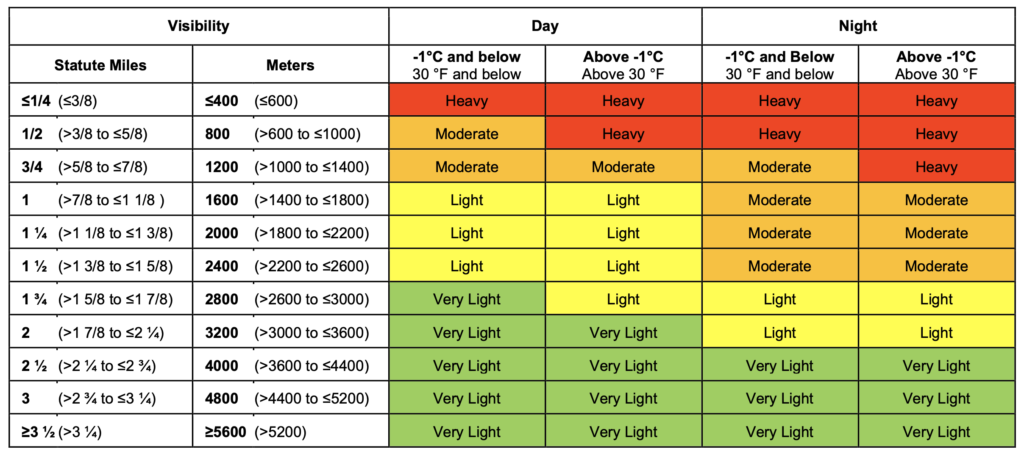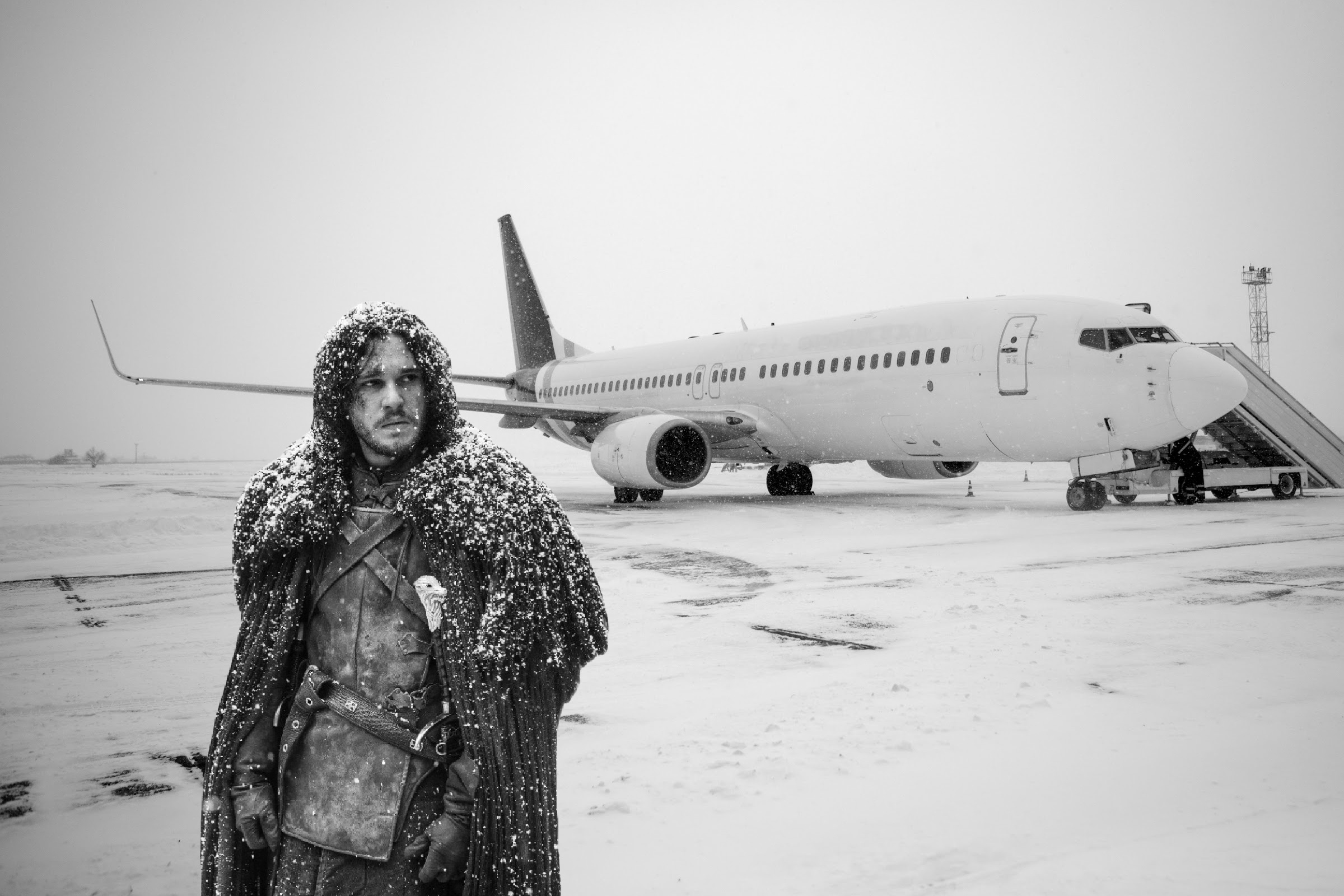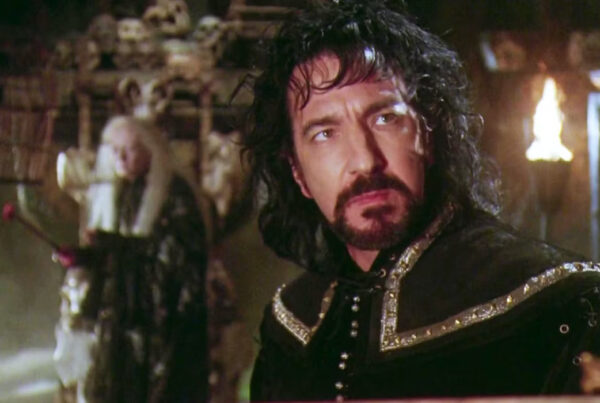Sorry, the GoT reference still hasn’t grown old. Anyway, every year the FAA & Transport Canada releases a new set of Holdover Time (HOT) guidelines for the winter season. The one for winter 2022 is available here. So if you want to update your de-icing procedures, manuals, and training in line with the guidance from the feds, here’s what you need to know…
What’s changed?
They’ve added some fluids and removed some fluids which are really good for middle speed aircraft. So basically, check what fluid is being used on your aircraft, confirm it is a good one for your aircraft Vr, and then make sure you use the right table.
Standard Winter Ops 101.
Type II generic holdover times have increased (because they removed a fluid called Beijing Something or other that was holding them back). How much by? A few minutes here, a few minutes there, mainly in the -3 °C and above (27 °F and above) section.
They also did a load of tests which means you now get HOTs for very cold snow (cold enough to turn your legs to ice blocks if you accidentally step into it because its colder than -14°C cold). This applies to a bunch of new Type II and IV fluids and is great because that’s the sort of stuff you’re going to want to escape from for sure.
Double check those tables!
If you’re heading into the generic fluid tables then that’s fine but you actually need to make sure the Type II or Type IV fluid is listed in table 55 or 57.
It might seem a little contrary to the point of a ‘generic table’ but there we go. If it isn’t in the table, and if it doesn’t have its own specific table, then chances are you’re in some dodgy airport where they’re spraying you with homemade, bootlegged moonshine and it might not be very safe.
Freezing Fog.
There are changes to the HOTs for FZFG if it’s mixed with ice crystals or mist. Same for snow mixed with ice crystals.
My opinion: You need some pretty trustworthy Met officer telling you exactly what is out there to start getting this specific. If in doubt, always go with the most limiting and then take a good look before taking off!
A note on a note.
You can takeoff up to 90 minutes after the start of fluid application with a few conditions. This isn’t a new change, this has always been the case, but still worth mentioning.

Small Hail.
This hasn’t changed but it is a confusing one so they’ve added a new note on it. It says this (give or take one or two inaccuracies):
- GR in the Metar means small hail, which means hail less than 1/4 inch… if you’re in the US.
- Outside the US, small hail is anything less than 5mm, and is reported as GS. If it says GR that means big hail (5mm or more). Don’t get them mixed up.
- If it doesn’t specify intensity then use the moderate ice pellets or small hail times.
- If you aren’t sure and don’t have a tape measure then send your FO out and check the bruise sizes when they return.
‘Snowfall intensities as a function of prevailing visibility’.
You know the one – they use it in your yearly Winter Ops sim to try and catch you out by overcomplicating which table you want to use and hoping you forget or get confused and then they can enjoy lecturing you on it during the debriefing…
Anyway, it has been changed, reformatted and updated. Compare them at your leisure. We like the new one much better.

Old.

New.
Must, shall, required, and should…
The document has these new disclaimer sheets at the start of each section:
 In case you aren’t familiar with these nuances of aviation lingo, here you go:
In case you aren’t familiar with these nuances of aviation lingo, here you go:
- Must: Really no grey area. You gotta do it no question, no bending, no ignoring. Just do it.
- Shall: A little bit more ambiguous – not quite the same level of necessity but a strong assertion of importance!
- Required: More a regulatory, meeting standards sort of a thing. If you want to two step de-ice then some de-icing fluid is required. You can try without but won’t get very far…
- Should: A wonderful word but don’t get carried away – it’s more of a “really should unless you really can’t” rather than an “only if you fancy it” sort of a meaning. So a shall *unless you have a good reason not to.
A final thought.
Don’t forget GRF changed in November 2021. You might not have operated in conditions needing a runway surface condition assessment since then so it’s worth a quick read of what it now looks like.
Also, thanks to Avioscribe for this handy video on the main highlights and changes to the Holdover Time Guidelines for Winter 2022-2023. Trying to compare the two documents was a mission we weren’t prepared to undertake and you’ve done a spot on job.
More on the topic:
- More: Winter Ops: Fun Fuel Facts
- More: Rolling the dice with de-ice
- More: Winter Is Coming
More reading:
- Latest: Venezuela & Caribbean Airspace Update
- Latest: ReFuelEU: Europe’s new anti-tankering rules explained
- Latest: Milan targets business jets with 650% rate increase
- Safe Airspace: Risk Database
- Weekly Ops Bulletin: Subscribe
- Membership plans: Why join OPSGROUP?











 Get the famous weekly
Get the famous weekly 





